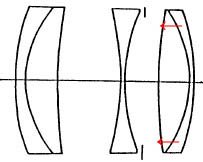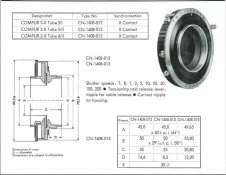Whiteymorange
Subscriber
I came upon a set of cells (2) from a Voigtlander f4.5 18cm Heliar, but they were not in shutter or barrel, just wrapped in cloth and stuffed into a metal tin. They are in wonderfully clean shape and I'd like to test them. The original shutter seems to have been a #2 Compur (dial set) and there is some reference on line to remounting them in a #3 Compound, but it is likely to be somewhat expensive since it requires machining spacers. I have two questions for the lens gurus out there: Since the Heliar design consists of a cemented pair on either side of a biconvex center element, is it likely that I am missing something? I haven't been able to take either cell apart. Second, is there anyone who might have a reference to the spacing of these cells so that I might jury-rig a barrel mount for testing?
Thanks in advance.
Thanks in advance.




